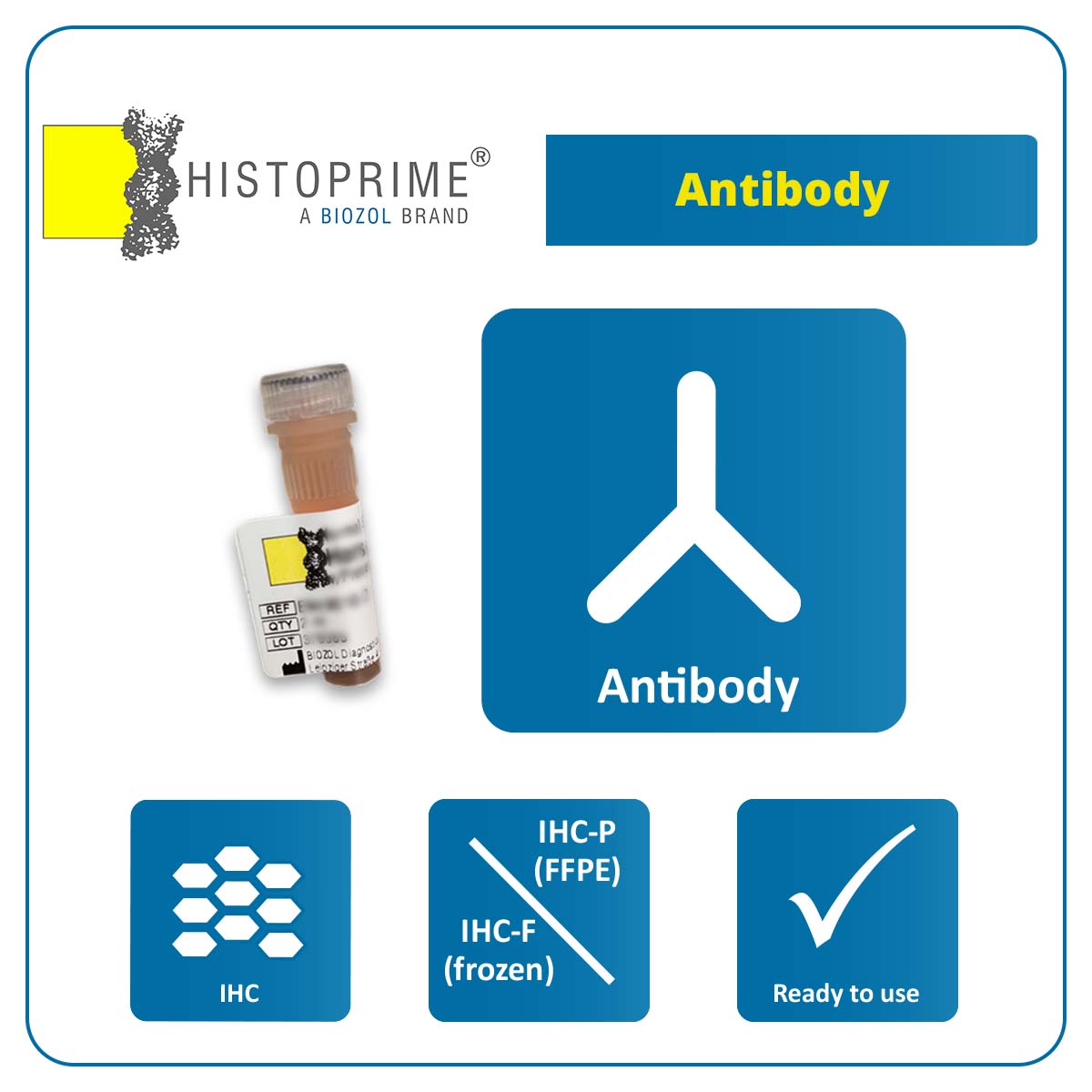Mouse anti-Human p170-Glycoprotein (MDR) (unconjugated), Clone JSB-1, IgG1, Ready-to-use
Ready-to-use Antibody for Immunohistochemistry
Background
The antibody JSB-1 reacts with a cytoplasmic epitope of a plasma membrane associated glycose protein (170 -180 kD). It is also referred to as P-170 glycose protein due to its molecular weight (“P” for permeability). The P-glycose protein points to a strong structural similarity with the transport proteins of bacteria.
P-glycose proteins are found in various normal cells and are capable of transporting toxic substances out of cells. These cells typically have secretory or excretory properties, such as the renal proximal tubules, bile ducts, and adrenal cortex.
| Specificity | p170-Glycoprotein (MDR) |
|---|---|
| Species Reactivity | Human |
| Host / Source | Mouse |
| Isotype | IgG1 |
| Application | IHC-F, IHC-P |
| Clone | JSB-1 |
| Antigen | Human p170-Glycoprotein (MDR) |
| Quantity | 5 ml |
| Format | RTU |
| Storage Temperature | 2-8 °C |
| Shipping Temperature | 20 °C |

